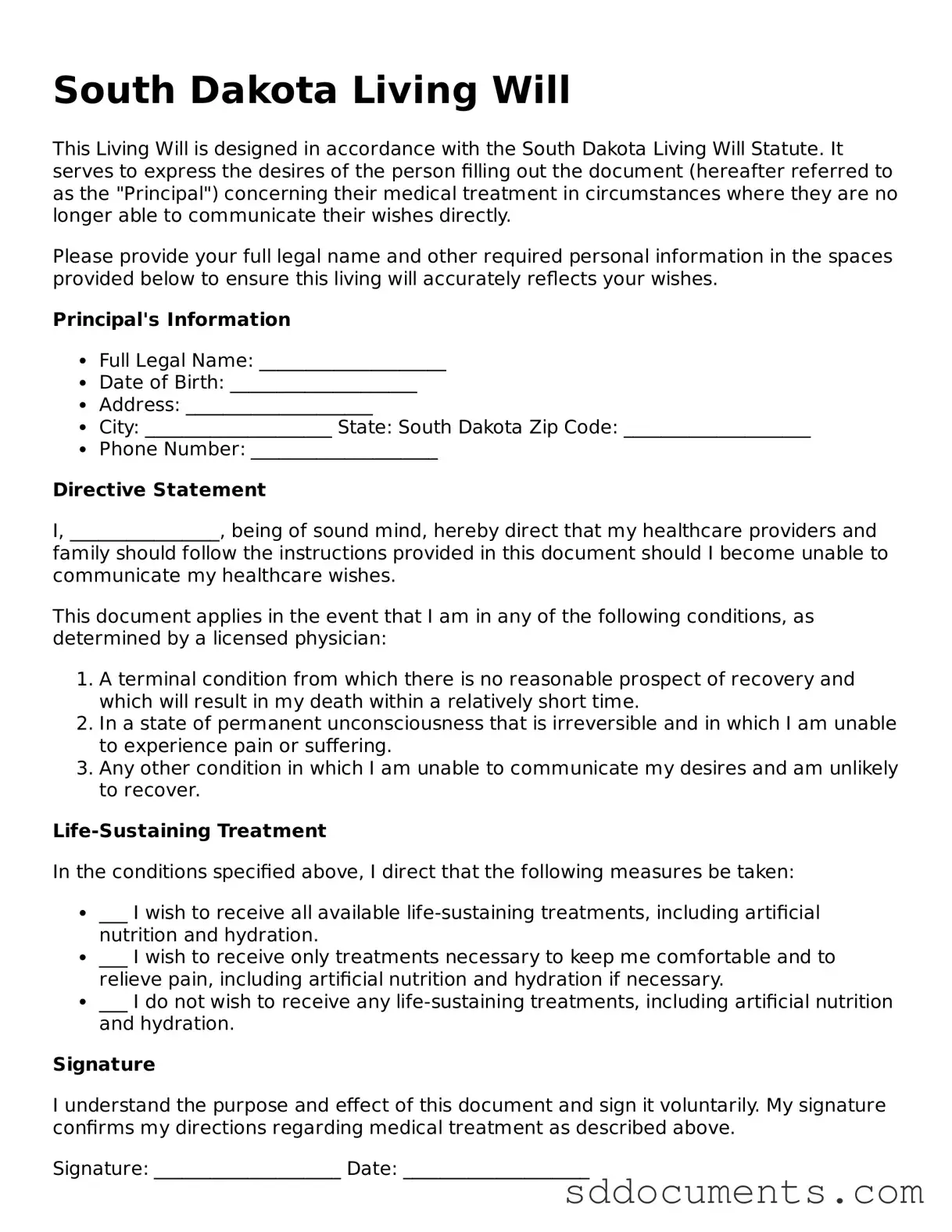Free Living Will Template for South Dakota
A South Dakota Living Will form is a legal document that allows individuals to outline their preferences for medical treatment in the event they become unable to communicate their wishes. This form ensures that your healthcare decisions align with your values and desires, providing peace of mind for both you and your loved ones. To take control of your medical future, consider filling out the form by clicking the button below.
Customize Document Online
